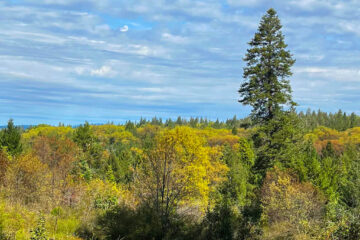3/5/2010
Studies reveal vernal pool habitat loss in the Central Valley
New studies show that 135,000 acres of the Central Valley’s vernal pool habitat—about 13%—has been lost to agriculture and urbanization during the last three decades.
Placer Land Trust today released the findings of three vernal pool studies conducted by scientists at the Sacramento regional office of AECOM, a global provider of environmental and technical services. The three studies were commissioned to document how much vernal pool habitat has been lost in recent years, how this loss has occurred under current environmental regulations, and how vernal pool loss has been mitigated.
“Vernal pools are a vital and unique ecological resource of the Valley and support many native plant and animal species, including several that are rare, threatened, or endangered,” said Dr. Gerrit Platenkamp, lead author of the reports.
Vernal pools form within shallow depressions in grasslands that are underlain by an impervious soil layer. In the winter, the pools fill with rain water and then slowly dry out through evaporation in the spring. As a type of wetland that supports rare species, vernal pools are protected by the State and federal laws.
The studies show that the habitat losses have occurred in spite of regulation. A major finding is that agricultural land conversion has far exceeded urbanization as a cause of vernal pool habitat loss in the Central Valley, accounting for 81% of habitat loss.
Studies of 12 small vernal pool preserves in the Central Valley, which were established to offset losses due to development, showed that public trespassing, vandalism, domestic animal use, and similar activities were threatening the preserves’ ecological integrity and the species and habitats that the preserves were established to protect.
The studies outline measures to improve vernal pool protection, including active regulatory oversight of agricultural land use changes that violate existing laws protecting vernal pools and the threatened and endangered species that depend on them, improved record-keeping practices so that the effectiveness of vernal pool protections can be tracked over time and improved, annual monitoring reports for vernal pool preserves so that problems can be identified and addressed as they arise, and protection of new vernal pool preserves with conservation easements supported by adequate funding.
Placer Land Trust, as a neutral nonprofit organization, administered the vernal pool studies at the request of parties to the settlement of a lawsuit concerning a development project in western Placer County, California, which resulted in the loss of significant vernal pool habitat. The three
studies each received detailed and independent scientific peer review and are major new contributions to the factual understanding of vernal pools in the Central Valley.
Placer Land Trust has published the studies along with a summary at:http://www.placerlandtrust.org/vernalpoolreport.aspx


